
Animals that start with J include mammals such as jackals, jackrabbits, jerboas, junglefowl and the jaguar; birds such as jaegers, jays, and juncos; fish such as the John Dory, and invertebrates such as the Jerusalem cricket and jumping spider.
On this page you’ll meet these and many other interesting animals beginning with J, together with pictures and facts on each animal.
Below many of the animals you’ll find links that you can follow for further information, pictures and videos.
Included in this list are individual species (e.g., the jaguar) and well-known groups of species (e.g., jackals) whose names begin with J. The scientific name and conservation status are provided for each of the individual species.
Discover more animals in our A to Z animals section by clicking on the letters below…
Jabiru
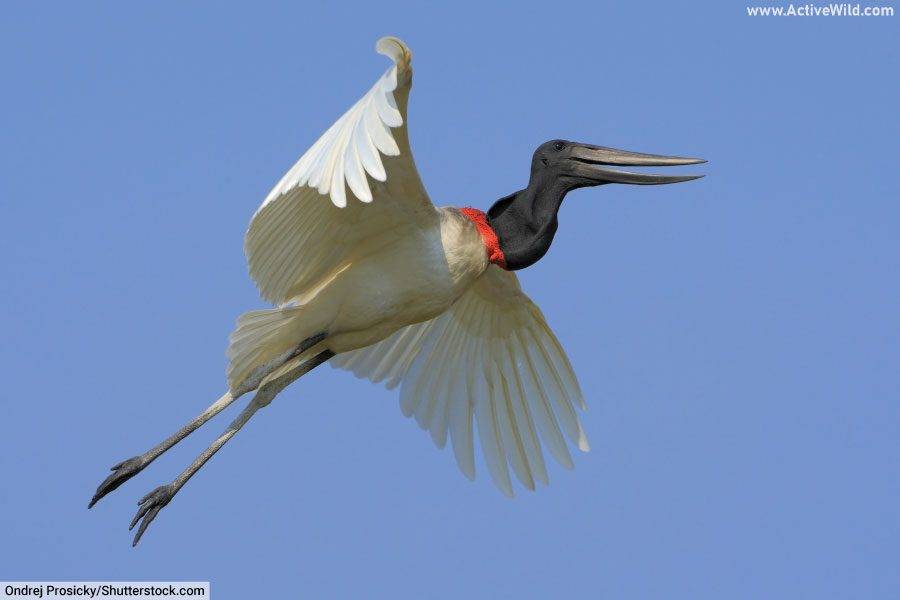
Scientific name: Jabiru mycteria
Type of animal: Bird
Family: Ciconiidae
Where found: South America, North America
Conservation status: Least Concern
The jabiru is a large, striking-looking member of the stork family, Ciconiidae. It is found mainly in South America, from Columbia south to central Argentina, and is also present in Central America and north into Mexico. It is very occasionally seen in the United States.
Like all storks, the jabiru is a long-legged, long-necked bird. Standing at up to 5 ft. / 1.52m tall, the jabiru is South America’s tallest flying bird, but not the continent’s tallest bird; the rhea (which is flightless) is slightly taller. (North America’s tallest bird is the whooping crane.)
The jabiru’s body and wings are white / pale gray. At the base of its neck is a bright red band. The rest of the neck, together with the head and bill, are black.
The jabiru hunts by holding its huge bill in the water and waiting for prey to come within snapping distance. An opportunistic feeder, the jabiru will feed on most small animals that cross its path, including fish, small reptiles, mollusks and insects.
Discover More With Active Wild
You can find out more about birds on this page: Birds: The Ultimate Guide
You can discover different types of birds on this page: Types Of Birds
Jacamar
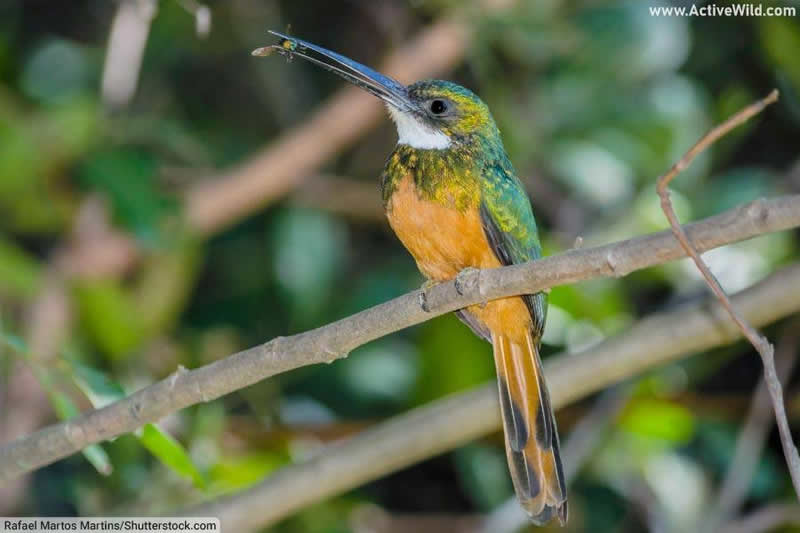
Type of animal: Bird
Family: Galbulidae
Where found: South America, North America
The eighteen species of jacamar make up the family Galbulidae. They are small, mostly brightly-colored birds found in woodlands and forests in Central and South America.
Jacamars are insectivores (insect-eaters), equipped with long, thin bills for catching their prey in mid-air. Jacamars typically hunt by sitting on a suitable perch and waiting for prey to come within range.
The great jacamar Jacamerops aureus, which reaches lengths of up to 30 cm / 12 in., is the largest jacamar species. It lives in rainforests in Central and South America.
Discover More With Active Wild
You can find out more about birds on this page: Birds: The Ultimate Guide
You can discover different types of birds on this page: Types Of Birds
Jacana
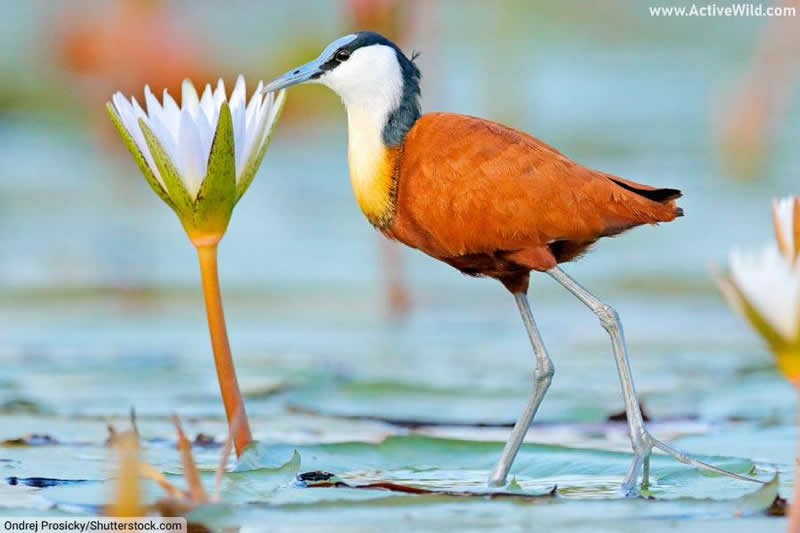
Type of animal: Bird
Family: Jacanidae
Where found: All continents except Europe and Antarctica
Jacanas are a family of eight wading birds that together make up the family Jacanidae.
Jacanas have long legs and extremely long claws, which are adaptations for walking on lilies and other floating plants.
Jacanas are known as “Jesus birds” due to their habit of walking on lilies (giving the observer the impression that they are walking on water).
Discover More With Active Wild
You can find out more about birds on this page: Birds: The Ultimate Guide
You can discover different types of birds on this page: Types Of Birds
Jack Russell Terrier

Scientific name: Canis lupus familiaris / Canis familiaris
Type of animal: Mammal
Family: Canidae
Conservation status: Domestic
The Jack Russell terrier is a breed of domestic dog first bred in England in the early 19th Century by the Rev. John Russell. A keen fox-hunter, Russell recognized that the breed’s small size and short legs would allow it to drive foxes from their burrows.
The Jack Russell is a small dog breed with either a smooth or rough coat. It is typically white with ether brown or black patches.
Discover More With Active Wild
You can find out more about the domestic dog on this page: Dog Facts
You can discover EVERY dog species on this page: Wild Dog Species List with Pictures & Facts
Jackals
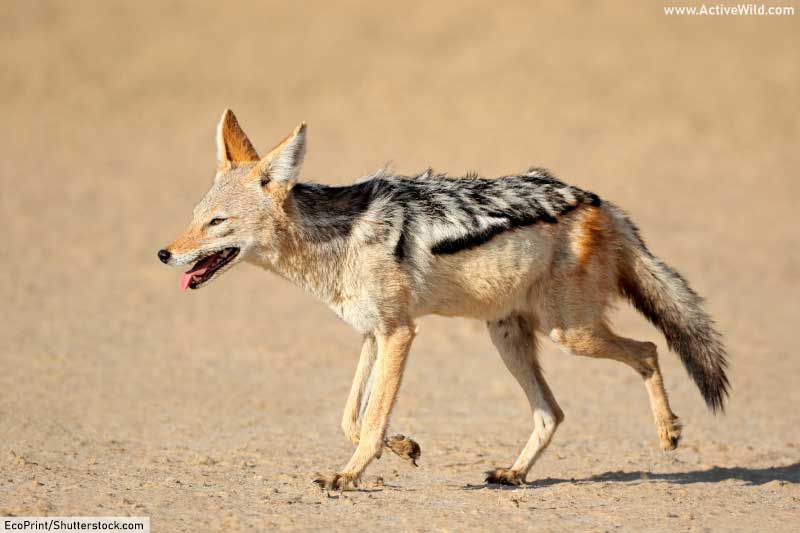
Type of animal: Mammal
Family: Canidae
Where found: Europe, Asia, Africa
There are three jackal species: black-backed, side-striped and golden. All belong to the dog family Canidae.
The closely-related black-backed jackal and side-striped jackal are found in Africa.
The side-striped jackal, the larger of the two African jackals, typically inhabits woodlands.
The black-backed jackal is usually found in more open habitats, including grasslands and savannas. It is an ancient dog species; individuals today are little changed from their Pleistocene ancestors.
The golden jackal is found in southeast Europe, the Middle East and south Asia. It is more closely related to the gray wolf than it is to the other two jackal species.
Discover More With Active Wild
You can find out more about the black-backed jackal on this page: Black-Backed Jackal Facts
You can discover EVERY dog species on this page: Wild Dog Species List with Pictures & Facts
Jackrabbit
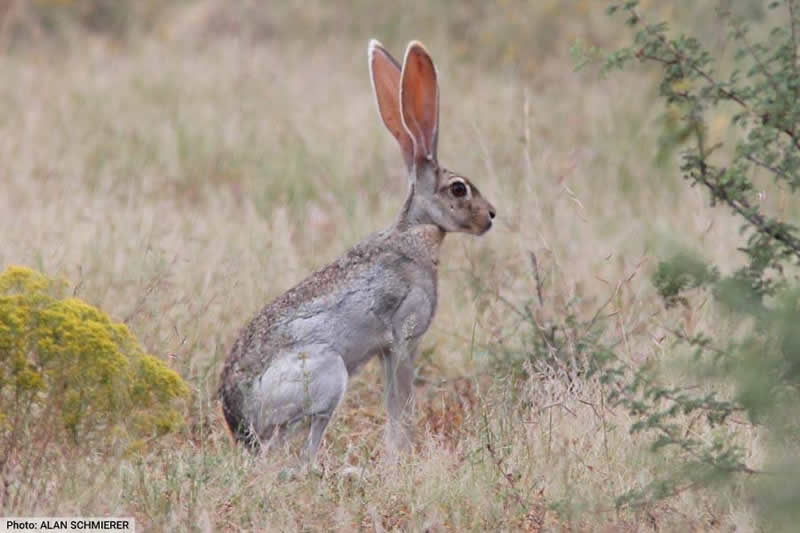
Type of animal: Mammal
Family: Leporidae
Despite the name, jackrabbits are hares, not rabbits. Hares (and jackrabbits) belong to the genus Lepus. Lepus is part of the family Leporidae, which also contains rabbits.
The seven species of jackrabbit are all found in North America. The largest jackrabbit is the white-tailed jackrabbit. Its range extends further north than that of any other jackrabbit.
Unlike rabbits, hares (including jackrabbits) don’t dig burrows. Instead, they rest and bring up their young in shallow holes in the ground known as forms. The young of hares and jackrabbits are precocial – able to move and feed by themselves soon after being born.
Discover More With Active Wild
You can find out more about mammals on this page: Mammals: The Ultimate Guide
Jaeger
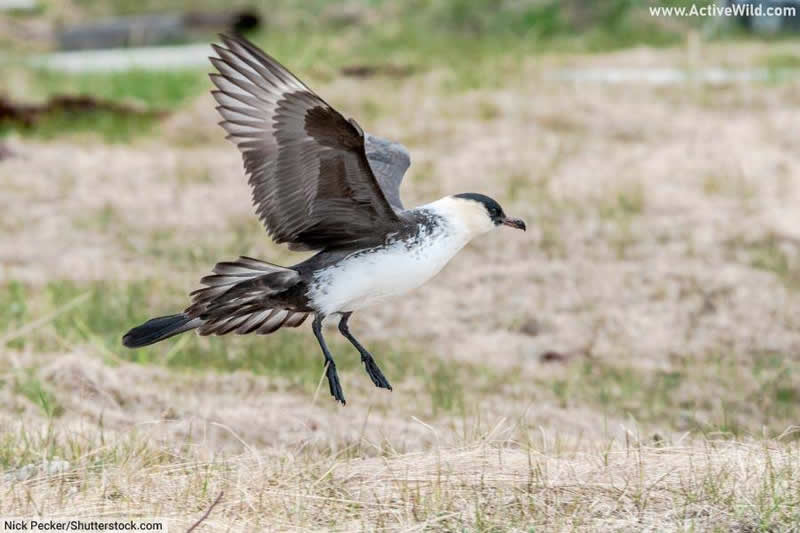
Type of animal: Bird
Family: Stercorariidae
Genus: Stercorarius
Jaeger is a North American name for three birds in the skua family, Stercorariidae. The three jaegers are: the long-tailed jaeger; the Arctic, or parasitic jaeger; and the pomarine jaeger. Outside of North America, these birds are known as skuas.
The jaegers are large seabirds that breed in the Arctic. Jaegers are infamous for their kleptoparasitic behavior. A kleptoparasite steals the prey of other species, rather than catching its own. Skuas steal food from other seabirds.
Food taken from other birds makes up the majority of a skua’s diet, although they do catch their own food.
Skuas make lengthy annual migrations between their feeding grounds in the South Pacific and Southern Oceans to their breeding grounds in the Arctic.
Discover More With Active Wild
You can find out more about birds on this page: Birds: The Ultimate Guide
You can discover different types of birds on this page: Types Of Birds
You can see more Arctic animals on this page: Arctic Animals List
Jaguar

Scientific name: Panthera onca
Type of animal: Mammal
Family: Felidae
Where found: South America, Central America
Conservation status: Near Threatened
The jaguar is the third-largest member of the cat family, Felidae – only the tiger and the lion are bigger.
The jaguar lives in the forests of Central and South America, where it is an apex predator (top of the food chain). The jaguar is also (very) occasionally seen in Texas and other southern United States.
Like other big cats, the jaguar belongs to the genus Panthera. (The definition of “big cat” is also sometimes widened to include the cheetah and cougar, which do not belong to the genus Panthera.)
The jaguar’s golden coat is decorated with numerous rings, which are known as rosettes.
The jaguar’s rosettes contain smaller black spots. (This differentiates the species from the leopard, whose rosettes lack these additional spots. The jaguar is also more heavily-built than its Old World cousin.)
Discover More With Active Wild
Discover more about the jaguar on this page: Jaguar Facts
You can discover other rainforest animals on this page: Rainforest Animals List with Pictures & Facts
You can see EVERY species of cat on this page: Wild Cats List with Pictures & Facts
Jaguarundi
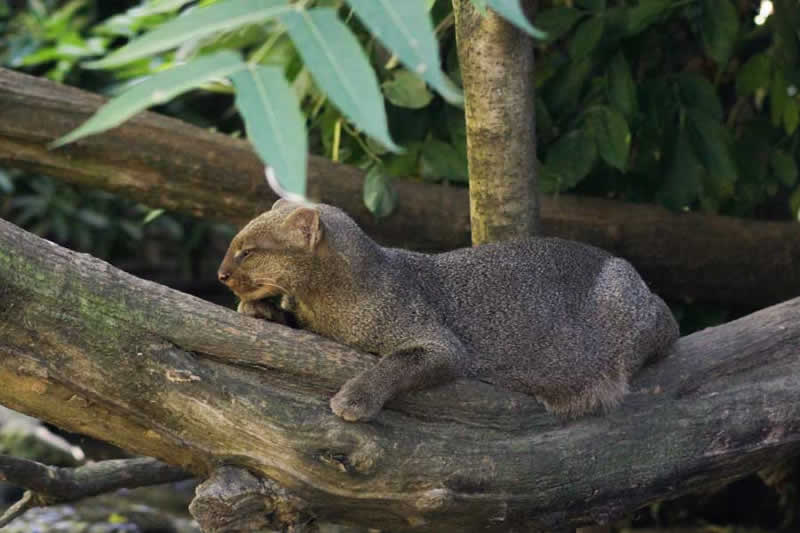
Scientific name: Herpailurus yagouaroundi
Type of animal: Mammal
Family: Felidae
Where found: South America, North America
Conservation status: Least Concern
The jaguarundi is a wild cat found throughout much of South America and Central America. The species is also occasionally seen in Florida and other southern United States. It inhabits a wide range of habitats, from rainforests to savannas.
Around twice as large as a domestic cat, the jaguarundi has relatively short legs and short, rounded ears. The species’ coat is either golden-red or gray; individuals can be either color, even if their siblings are the other color.
Discover More With Active Wild
Discover more about the jaguar on this page: Jaguarundi Facts
You can discover other rainforest animals on this page: Rainforest Animals List with Pictures & Facts
You can see EVERY species of cat on this page: Wild Cats List with Pictures & Facts
Japanese Macaque
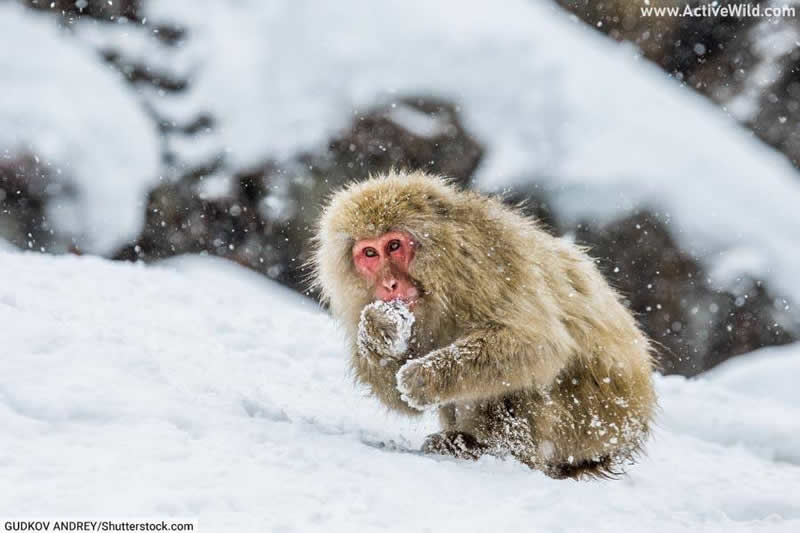
Scientific name: Macaca fuscata
Type of animal: Mammal
Family: Cercopithecidae
Where found: Asia
Conservation status: Least Concern
The Japanese macaque is a monkey found only in Japan, where it lives in a variety of forest habitats.
No other primate (other than man) is found further north or in colder environments than the Japanese macaque; the species is known as the “snow monkey” because the regions in which it lives are covered by snow for part of the year.
Japanese macaques living in Jigokudani Monkey Park have become a tourist attraction due to their communal bathing in the park’s hot springs.
Discover More With Active Wild
You can find out more about monkeys on this page: Monkeys: The Ultimate Guide
You can see different types of monkey on this page: Types Of Monkey
You can discover more Asian animals on this page: Asian Animals List with Pictures & Facts
Japanese Squirrel
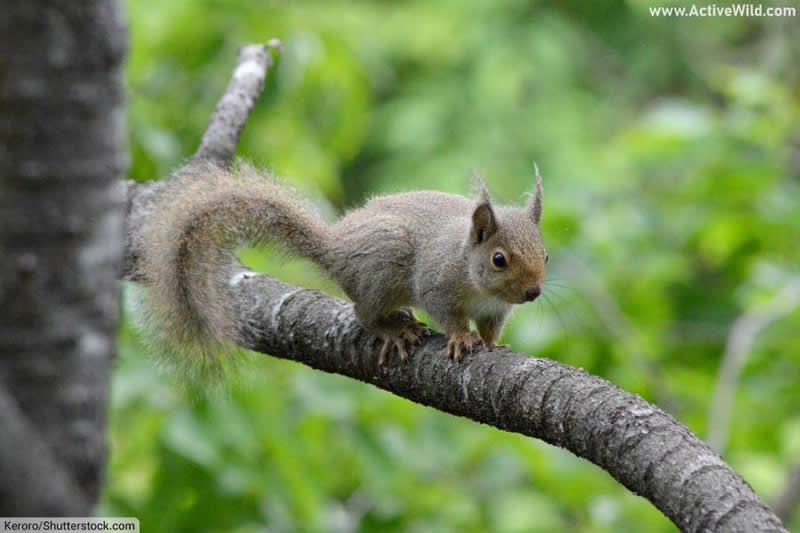
Scientific name: Sciurus lis
Type of animal: Mammal
Family: Sciuridae
Where found: Asia
Conservation status: Least Concern
The Japanese squirrel is a member of the squirrel family, Sciuridae. It lives in lowland to subalpine (below the tree line) pine forests on the Japanese islands of Honshū and Shikoku. The species was, until recently, also present on the island of Awaji.
The Japanese squirrel is one of around 100 species known as “tree squirrels” on behalf of their arboreal (tree-dwelling) lifestyles.
Tree squirrels, which are often known as just “squirrels”, are part of the squirrel family, Sciuridae, which also includes ground squirrels and flying squirrels.
Discover More With Active Wild
You can find out more about rodents on this page: Rodents: The Ultimate Guide
Javan Rhinoceros
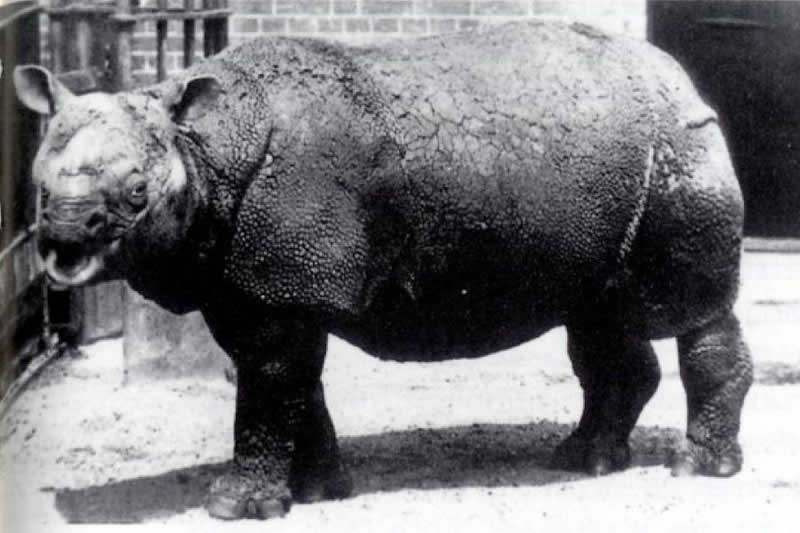
Scientific name: Rhinoceros sondaicus
Type of animal: Mammal
Family: Rhinocerotidae
Where found: Asia
Conservation status: Critically Endangered
The Javan rhinoceros is one of five living rhinoceros species. Once found not only on the island of Java, but also on Sumatra and into mainland Southeast Asia, the Javan rhino is now found only in Java’s Ujung Kulon National Park.
Only around 70 Javan rhinos are left in the wild, making the species one of the rarest and most endangered of all large species.
The Javan rhino is one of two single-horned rhino species, the other being the closely-related Indian rhino. All three other rhino species have two horns.
Only the male Javan rhinoceros has full horns; females either lack horns entirely, or have small stumps.
The Javan rhino’s tough skin forms deep folds, giving the impression that it is wearing armor.
Over-hunting (in particular for its horn, which is highly-valued in Chinese traditional medicine) is the main cause for the Javan rhino’s critically endangered status.
Discover More With Active Wild
You can find out more about rhinos on this page: Rhino Facts
You can discover more about the white rhino on this page: White Rhino Facts
You can discover more about the black rhino on this page: Black Rhino Facts
See more critically endangered animals on this page: Critically Endangered Animals List with Pictures & Facts
Jay
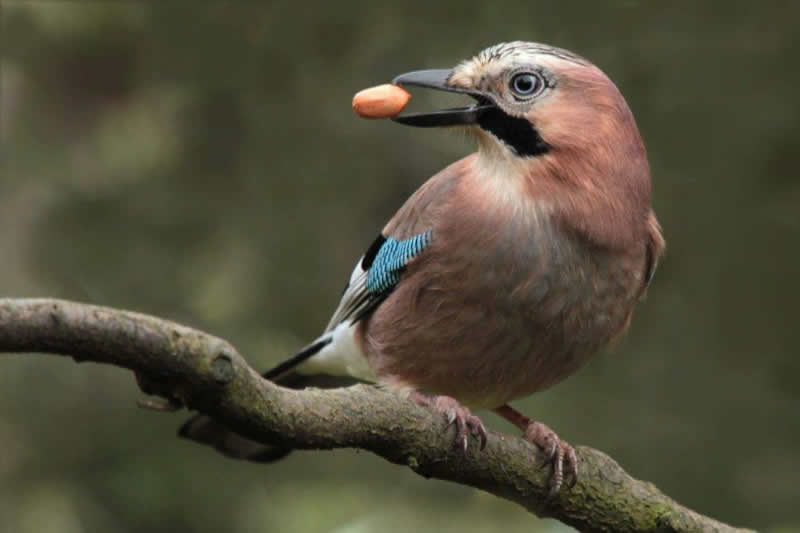
Type of animal: Bird
Family: Corvidae
Where found: Europe, The Americas, Africa, Asia
Jays are birds in the crow family, Corvidae. There are around 50 species of jay. Not all jays are closely related; birds with “jay” in their name are spread between several genera within the crow family.
(“Genera” is the plural of “genus”. A genus is a sub-group of animals within a family. A genus contains species more closely-related to one another than they are to other members of the family.)
Two main groups of jays have been identified: Old World jays (which includes the Eurasian jay, known simply as “jay” in the UK); and New World jays (which includes species such as the Florida and California scrub jays, and the blue jay).
Discover More With Active Wild
You can find out more about birds on this page: Birds: The Ultimate Guide
You can discover different types of birds on this page: Types Of Birds
Jellyfish

Type of animal: Cnidarian
Phylum: Cnidaria
Where found: Oceans worldwide,
Jellyfish are invertebrates (animals without backbones) found throughout the world’s oceans.
A jellyfish’s body consists of two main parts: the bell and the tentacles. The bell contracts and fills, pushing the jellyfish through the water.
The tentacles of a jellyfish are equipped with stinging cells that deliver venom. These are used both to capture prey and to provide defense from predators.
The sting of some jellyfish – notably species of box jellyfish of class Cubozoa – can be fatal to humans. The stings of many other jellyfish species are potent enough to cause severe discomfort for swimmers unlucky enough to come into contact with the animals’ tentacles.
Discover More With Active Wild
You can discover more ocean animals on this page: Ocean Animals List with Pictures & Facts
Jerboa

Type of animal: Mammal
Family: Dipodidae
Where found: Africa, Asia
Jerboas are small, burrowing rodents that look like miniature kangaroos. Much like kangaroos, jerboas move by saltation (hopping).
Jerboas are found in the hot deserts of North Africa and Asia. These little rodents have several adaptations for living in this open habitat, including a sandy-colored coat for camouflage; large ears and excellent hearing to detect predators; the ability to run at extremely high speeds (up to 24 km/h / 15 mph); and the ability to make rapid changes in direction.
There are around 52 species of jerboa. Together they make up the family Dipodidae.
Discover More With Active Wild
You can find out more about rodents on this page: Rodents: The Ultimate Guide
You can discover more desert animals on this page: Desert Animals List with Pictures & Facts
Jerusalem Cricket
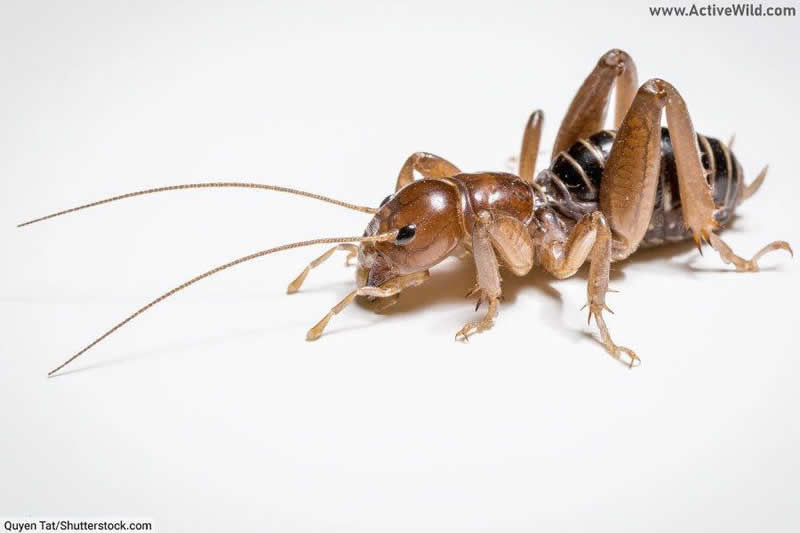
Type of animal: Insect
Family: Stenopelmatidae
Where found: North America, Central America
Also known as “potato bugs”, Jerusalem crickets are large, flightless insects found in North America. Due to their sprawling gait, large abdomens and lack of wings, Jerusalem crickets are often mistaken for spiders.
The 40-odd species of Jerusalem cricket are divided between two genera: Ammopelmatus, which is found in the United States and Mexico, and Stenopelmatus, which is found in Central America.
Despite their name, Jerusalem crickets are not true crickets (which belong to the family Gryllidae). They are, however, in the same order, Orthoptera, as crickets, and have the elongated hind legs characteristic of insects in this group.
Jerusalem crickets have powerful jaws and will deliver a painful bite if threatened.
Discover More With Active Wild
You can find out more about insects on this page: Insects: The Ultimate Guide
You can discover more North American animals on this page: North American Animals
Jico Deer Mouse
(No Photo Unavailable)
Scientific name: Habromys simulatus
Type of animal: Mammal
Family: Cricetidae
Where found: North America
Conservation status: Critically Endangered
The Jico deer mouse is a critically endangered rodent that is endemic (only found in) Mexico. It lives in lowland rainforests in the Sierra Madre Oriental region – a mountain range in northeastern Mexico.
The Jico deer mouse belongs to the family Cricetidae, which is also home to several familiar rodent groups such as hamsters, voles and lemmings.
Deforestation caused both by logging and by human expansion into the species’ forest habitat have resulted in the Jico deer mouse becoming critically endangered. Only around 50 adult Jico deer mice are thought to remain.
Discover More With Active Wild
You can find out more about rodents on this page: Rodents: The Ultimate Guide
You can discover more critically endangered animals on this page: Critically Endangered Species List with Pictures & Facts
John Dory
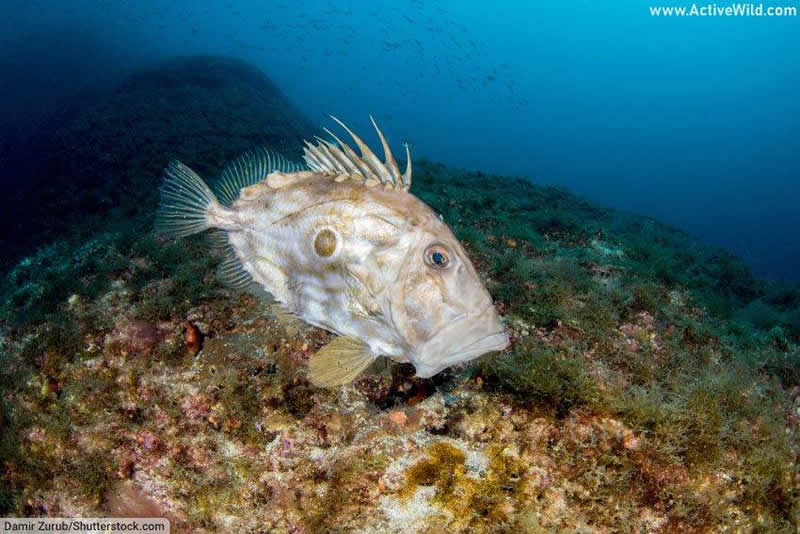
Scientific name: Zeus faber
Type of animal: Fish
Family: Zeidae
Where found: Europe, Africa, Southeast Asia, Australia
Conservation status: Data Deficient
The John Dory is a marine fish found off the coasts of Europe, Africa, Southeast Asia, Australia and New Zealand.
The dorsal fin of the John Dory has ten long spines. Its body is circular in shape and extremely thin, making the fish difficult to see from the front.
The pale orange body of the John Dory has a large eye-like marking on either side. The fish will turn and flash its eye-marking to startle potential predators or confuse prey.
Discover More With Active Wild
You can discover more ocean animals on this page: Ocean Animals List with Pictures & Facts
Jumping Spider

Type of animal: Arachnid
Family: Salticidae
Where found: Worldwide
With over 6,000 recognized species, the jumping spider family Salticidae is the largest spider family. Jumping spiders can be recognized by a row of four, forward-facing eyes at the front of the head, with the inner pair being particularly large. Another four eyes are found elsewhere on the head, making a total of eight eyes.
With all those eyes, it’s not surprising that jumping spiders have extremely good vision.
Jumping spiders can move normally, but–as the name suggests–are also capable of making powerful leaps.
Most jumping spiders rely on their excellent vision and jumping ability to actively hunt their prey; relatively few jumping spiders build a web for this purpose.
Discover More With Active Wild
You can find out more about arachnids on this page: Arachnids: The Ultimate Guide
Discover the differences between spiders and insects on this page: Is A Spider An Insect?
Junco
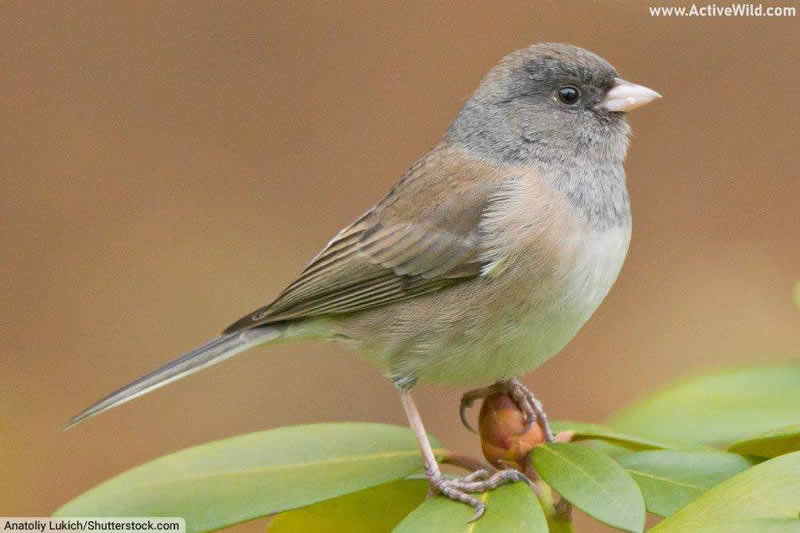
Type of animal: Bird
Family: Passerellidae
Where found: North America
The five junco species make up the genus Junco (a genus is a group of related species within an animal family). The genus Junco is part of the American sparrow family, Passerellidae.
Juncos are small, typically grey-brown in color, and have sturdy, conical bills for eating seeds.
Perhaps the most familiar junco is the dark-eyed junco, which is widespread across the United States, particularly during the winter, when it arrives in large numbers from its breeding grounds in Canada and the northwestern United States.
The species is one of North America’s most common forest birds, and is also a common garden visitor.
Discover More With Active Wild
You can find out more about birds on this page: Birds: The Ultimate Guide
You can discover different types of birds on this page: Types Of Birds
Test your knowledge of North American birds with out Android App: North American Bird ID Quiz
Jungle Cat
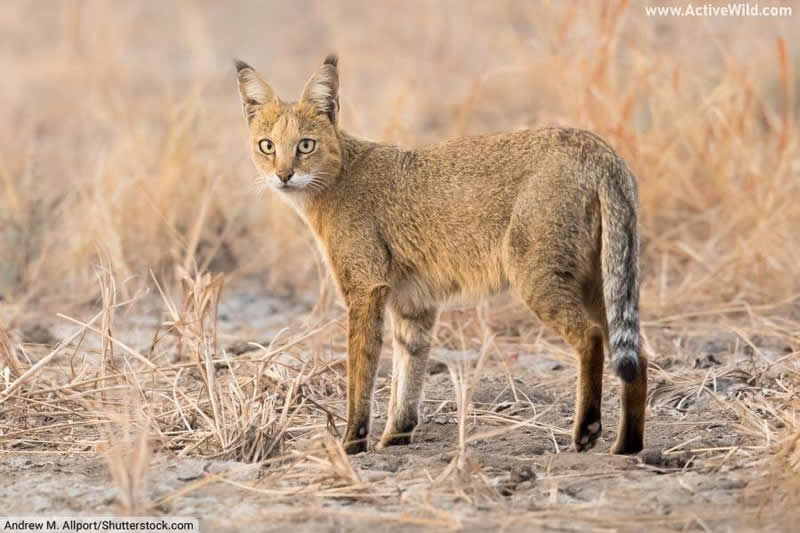
Scientific name: Felis chaus
Type of animal: Mammal
Family: Felidae
Where found: Asia, Middle East
Conservation status: Least Concern
The jungle cat is a wild cat species found in the Middle East and across Asia. Around twice the size of a domestic cat, it has a sandy-colored coat speckled with gray on the back. Black bands can be seen on the insides of the forelegs, and the tail is ringed with black bands towards its black tip.
Despite its name, the jungle cat inhabits a wide range of habitats, and in fact is not commonly found in jungle-like rainforests. The species is typically found in wetlands and swamps, and will even live in grasslands and deserts.
Discover More With Active Wild
You can find out more about cats on this page: Cat Facts
You can see a list of EVERY cat species on this page: Cat Species List with Pictures & Facts
Junglefowl
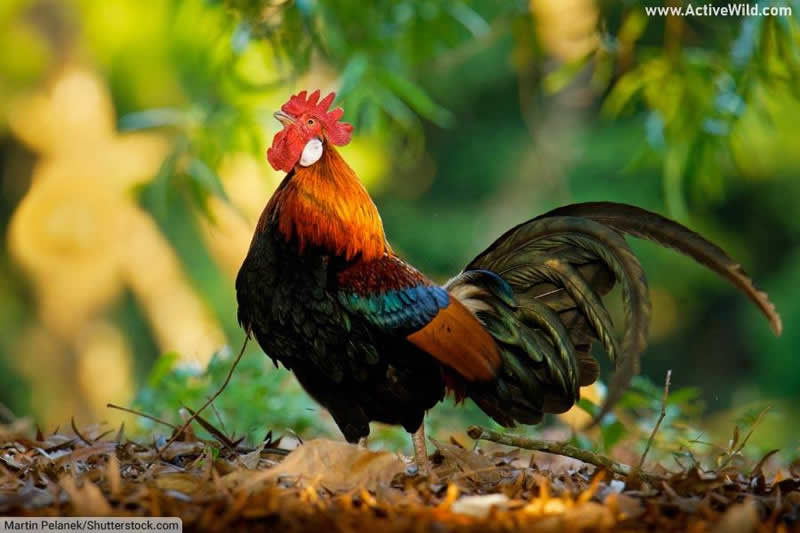
Type of animal: Bird
Family: Phasianidae
Where found: Asia
The four wild species of junglefowl, together with the domestic chicken, make up the genus Gallus, which is part of the pheasant family, Phasianidae.
Junglefowl are found in the wild in southern Asia, where they inhabit forests and forest edges.
Male junglefowl have a colorful plumage and long tail feathers. Their heads are decorated with a large, red comb (a fleshy growth on top of the head), and wattles (fleshy flaps of skin that hang from the chin near the beak).
The red junglefowl is thought to be the ancestor of the domestic chicken.
The plumage of female junglefowl is relatively drab, allowing them to stay camouflaged while brooding their eggs. The comb and wattles of female junglefowl are smaller and less conspicuous than those of the male.
Discover More With Active Wild
You can find out more about birds on this page: Birds: The Ultimate Guide
You can discover different types of birds on this page: Types Of Birds
Animals That Start With J: Conclusion
Animals That Start With V: Conclusion
We hope that you’ve discovered some interesting animals with names beginning with J on this page. You can find out more about the animal kingdom on the following pages:
Discover more animals in our A to Z animals section by clicking on the letters below…
The post Animals That Start With J, List With Pictures & Facts appeared first on Active Wild.


























